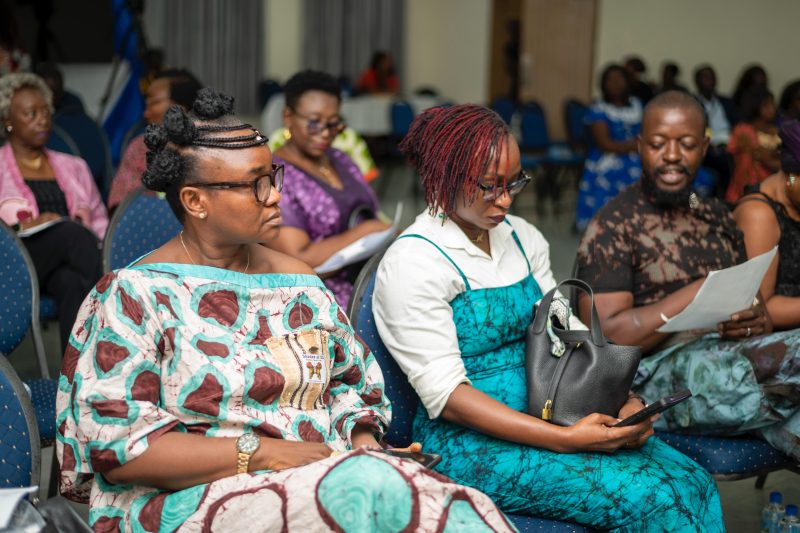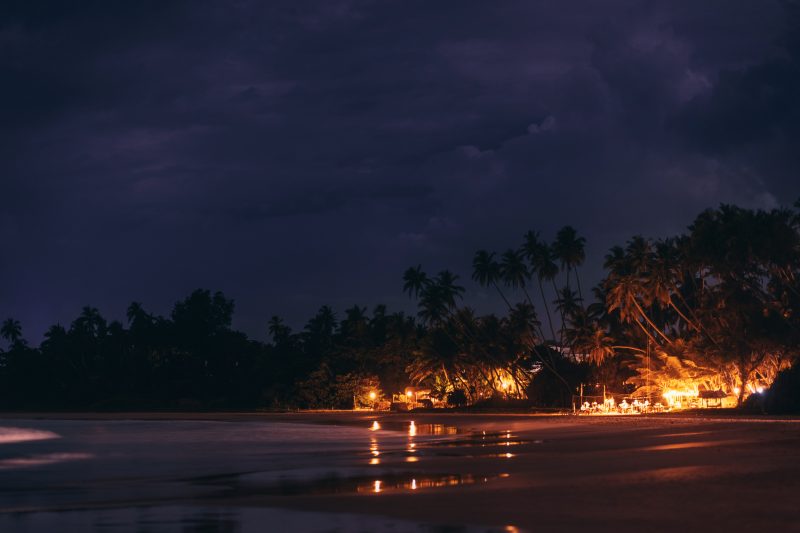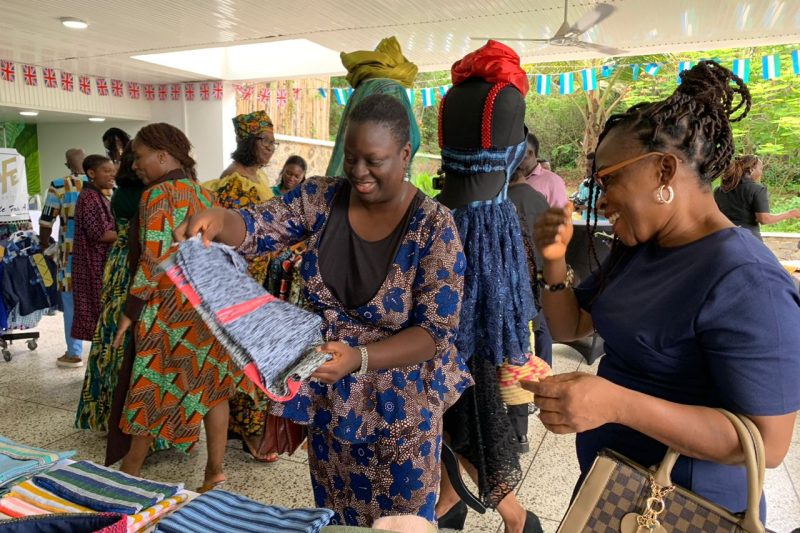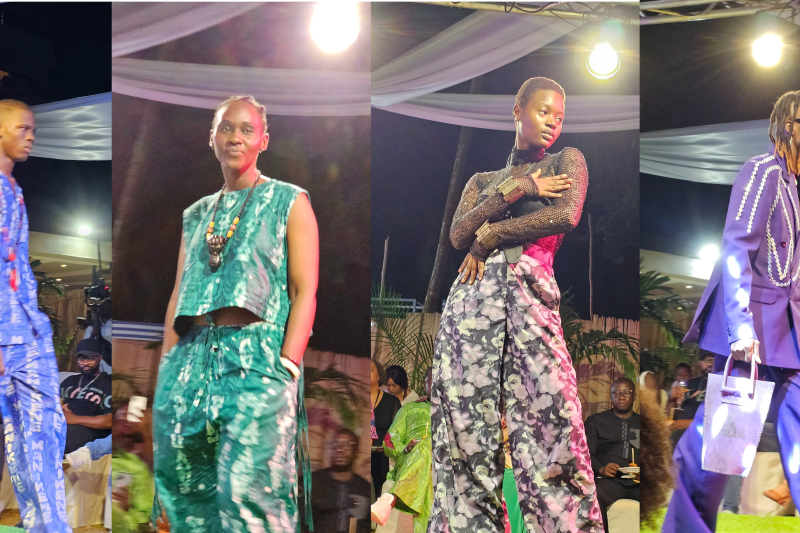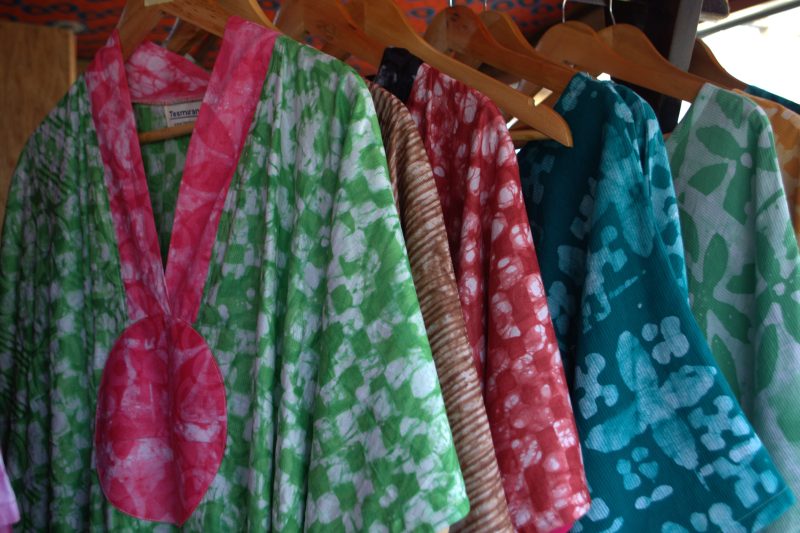Sierra Leonean textiles, the sleeping beauty of the African textile industry, are in the midst of a dynamic reawakening as the country’s designers, at home and abroad, explore the export and investment potential of blending heritage craftmanship with innovative designs and global fashion trends.
Behind the sector’s resurgence are Sierra Leonean brands like Madam Wokie, Izelia, Bivamiks Designs, Pa Musa, Vivid Emporium and Country Cloth Textiles. With a business model that involves handling the value chain from start to finish – weaving, dyeing, tailoring, marketing and distribution – these brands focus on creating bespoke products for a niche market with sophisticated international tastes.
In its heyday, Sierra Leone’s small but well-established textile industry was famed for the excellence and artistry of its gara (a form of tie-dyeing) and country cloth (cotton cloth that is hand woven in narrow strips and sewn together). Examples of such artisanship are on display in museums around the world, including the British Museum, Metropolitan Museum of Art and Brighton Museum. However, Sierra Leone, like other African producers, was gradually pushed out of the market by a combination of economic liberalisation policies, the industrial rise of China, domestic turmoil and insufficient investment in technical and human resources.
The pendulum is slowly swinging back, and the African textile industry is now forecast to grow by a compound annual rate of over 4% between 2021 and 2026 – the consequence of consumer demand for more sustainable and authentic fashion along with an increasing global appetite for the “Made in Africa” brand.
Easy shipping access to European and American markets and a ready supply of raw materials – West Africa is a major cotton growing region – are added advantages for the industry to leverage. There are also trade agreements like the UK Generalised Scheme of Preferences (GSP), which allow developing countries such as Sierra Leone to have quota-free access and nil rates of import duty on a range of goods. Other trade deals that are advantageous include the USA Africa Growth and Opportunity Act (AGOA), signed into law in the United States in 2000, which gives tariff and quota exemptions to the textile exports of 38 African countries if these meet certain rules; and the EU Everything but Arms (EBA) initiative, which gives duty- and quota-free market access to all but a few products from Least Developed Countries (LDCs).
Furthermore, sourcing from Asia has faced important challenges in the recent years, as issues around workers’ conditions, quality control and environmental consequences have emerged. This is encouraging clothing manufacturers to cultivate more diverse and resilient supply chain partnerships and look at suppliers who are geographically closer.
With a number of internationally influential fashion champions, Sierra Leone is well placed to capture a share of this flourishing market, particularly if it focuses on high-quality niche markets and direct relationships with buyers rather than aiming for the low-cost mass market, says Avril Pratt, Consultant with Invest Salone (ISL), the UK Government-funded private sector development initiative.
“The worldwide push for a wider range of cultural contributions is bringing African design talent to the fore of the mainstream fashion industry, and diaspora Sierra Leoneans like Foday Dumbuya, founder of the British African heritage fashion brand Labrum London, and Ibrahim Kamara, the editor-in-chief of Dazed Media, are amongst those leading the charge,” Avril Pratt says.
Foday Dumbuya is intentional about linking his work to his cultural heritage. In a recent interview he said: “I wanted to leave a legacy for people in West Africa where in 50 years or so they will have something to look back at as a reference. African fashion and culture wasn’t represented the right way in mainstream media, so I thought I’d set something up and tell the untold African story the right way – rich heritage, culture and music. I wanted Labrum to rebel against short-term trends and to create timeless fashion.”
Dumbuya’s long-term goal, he says, is to produce fabric from scratch to finish in Sierra Leone, with a Sierra Leonean brand and story behind the product. For his SS22 collection, he collaborated with the Madam Wokie Skills Development Initiative, an organisation that provides women with practical skills and economic opportunities, to create bespoke tie-dye prints.
International collaborations such as this are essential to promote Sierra Leonean creativity to a wider audience, as well as to introduce new methods to Sierra Leonean manufacturers, says Mary-Ann Kai Kai, founder of Madam Wokie. She is one of the industry’s trailblazers and has worked with traditional artisans on modernising heritage textiles since the launch of her brand 12 years ago. She points out that the aesthetic characteristics of traditional creative techniques can now be captured and mass produced through technology, which leaves the industry vulnerable. “We need to think beyond what we are currently doing or risk being left behind. This includes increasing the scale of production by industrialising part of the process, being prepared to push creative boundaries and adapting to the needs of different markets. Gara can be done on different fabrics – silk, cotton, linen, even leather, and Western audiences want softer, more flexible fabrics made from natural fibres,” Mary-Ann Kai Kai says.
Although the sector’s revival is still in its infancy, Avril Pratt emphasises the need for manufacturers to address issues of quality, consistency and reliability, saying: “Production capacity and quality are already proving to be constraints, and Sierra Leonean manufacturers will need to address these if the industry is to capitalise on the regional and international appetite for African textiles.”
In the meantime, Invest Salone is planning a pipeline of activities to support the sector. This includes assessing the feasibility of accessing the niche textiles market, analysing the capability gaps between brands and the needs of their buyers and the technical support required, and linking Sierra Leonean brands with international buyers through established buyers’ platforms.
Avril Pratt concludes: “Diversifying Sierra Leone’s economy is essential for the country’s economic and social development. The fashion industry is one of the world’s most dynamic economic sectors and a huge source of employment, particularly for women. Globally it is estimated to be worth US$1.5 trillion, of which Africa only accounts for a small portion. This offers significant opportunities for Sierra Leone’s fashion and textile sector, which has such a compelling history, to drive sustainable development and create jobs.”
Further reading:


